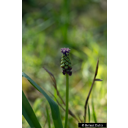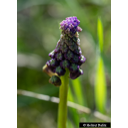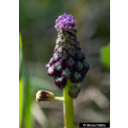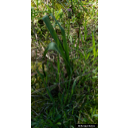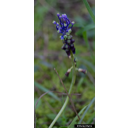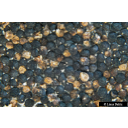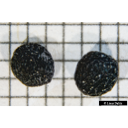Wissenswertes zu diesem Pflanzenindivuduum
Leopoldia comosa (L.) Parl. 1847
Asparagaceae
- Spargelgewächse (APG IV)Schopfige Traubenhyazinthe
Akzessionnummer: SYS-3238
Pflanzjahr: 0
Taxonkonzept: The Plant List (2014), version 1.1
Verbreitung: Europa, Türkei, Syrien, Arabien, Iran, Nordafrika; eingebürgert auf den Britischen Inseln, in Dänemark
Größe: 0 (m)Blütezeit: V - VI
Muscari comosum Mill. - Accepted: Muscari comosum Mill. bei Zander 2008; Familie: Hyacinthaceae (Zander 2008)Muscari comosum Mill. - Accepted: Leopoldia comosa (L.) Parl. bei The Plant List (2010); Familie: Asparagaceae (APG III)Leopoldia comosa (L.) Parl. - Accepted: Leopoldia comosa (L.) Parl. bei The Plant List (2010); Familie: Asparagaceae (APG III)Leopoldia comosa (L.) Parl. - Accepted: Leopoldia comosa (L.) Parl. bei The Plant List (2014), version 1.1; Familie: Hyacinthaceae ()Leopoldia comosa (L.) Parl. - Accepted: Leopoldia comosa (L.) Parl. bei The Plant List (2010); Familie: Asparagaceae (APG IV)Muscari comosum Mill. - Accepted: Muscari comosum Mill. bei Zander 2008; Familie: Asparagaceae (APG IV)Muscari comosum (L.) Mill. - Accepted: Muscari comosum (L.) Mill. bei BfN Checklist Flora DE; Familie: Liliaceae (APG IV)Leopoldia comosa (L.) Parl. - Accepted: Leopoldia comosa (L.) Parl. bei World Flora Online; Familie: Asparagaceae (APG IV)Muscari comosum (L.) Mill. - Accepted: Muscari comosum (L.) Mill. bei Plants of the World Online; Familie: Asparagaceae (APG IV)Leopoldia comosa (L.) Parl. - Synonym: Muscari comosum (L.) Mill. bei Plants of the World Online; Familie: Asparagaceae (APG IV)Muscari comosum (L.) Mill. - Synonym: Leopoldia comosa (L.) Parl. bei World Flora Online; Familie: Asparagaceae (APG IV)
Erhardt, W., Götz, E., Bödeker, N. & Seybold, S. (2008): Der große Zander. Enzyklopädie der Pflanzennamen. Band 2. Arten und Sorten. Eugen Ulmer KG, Stuttgart (Hohenheim), 18. Aufl., 2103 S.; Kew Gardens and Collaborators (2017): Plants of the World Online. see: plantsoftheworldonline.org.; The International Plant Names Index (2009). Published on the Internet http://www.ipni.org; Courtesy to IPNI, 2009. Exported from IPNI at date: 2009-09-22 20:17:51;
Diese Webseite verwendet Google Maps, um Karten und Standorte von Pflanzen in den Hohenheimer Gärten anzuzeigen. Dadurch werden unter Umständen Daten an Google weitergeleitet, was mit einer Verarbeitung Ihrer personenbezogenen Daten verbunden sein kann. Die Datenschutzerklärung von Google finden Sie hier: Datenschutzerklärung von Google

